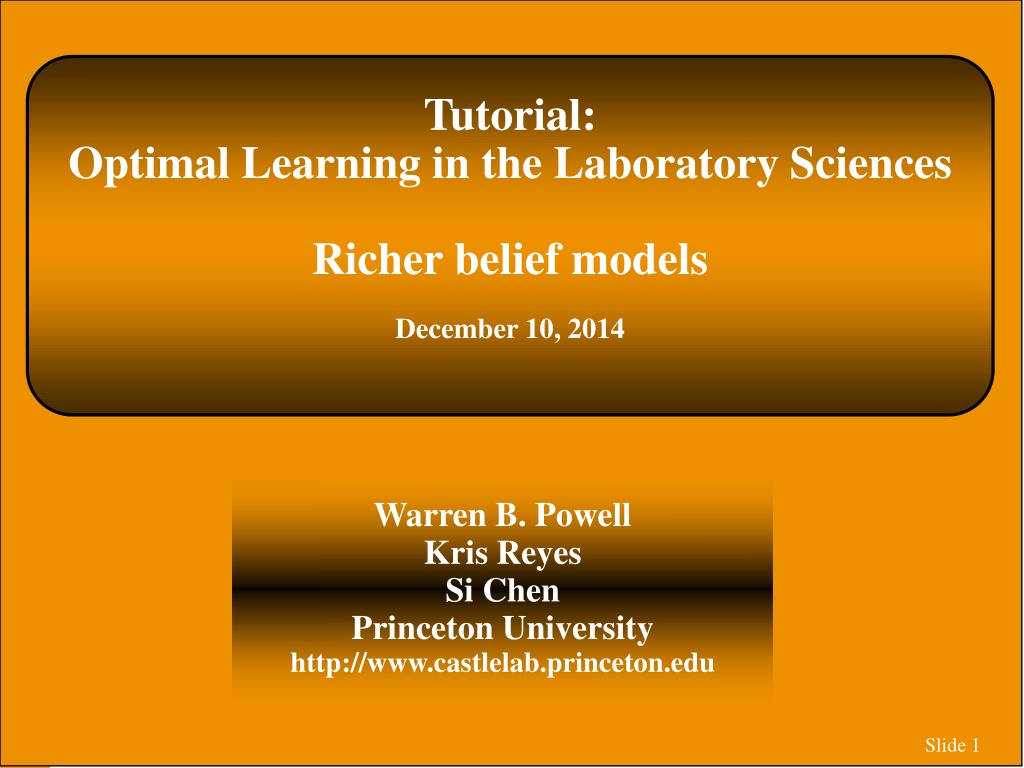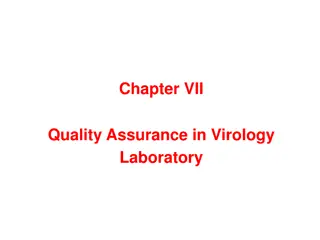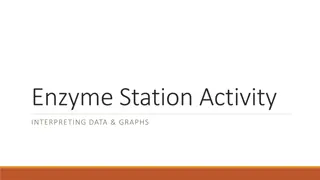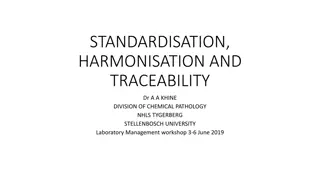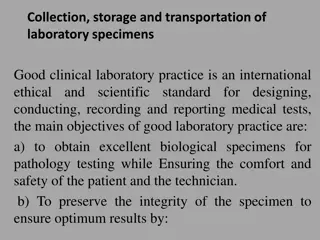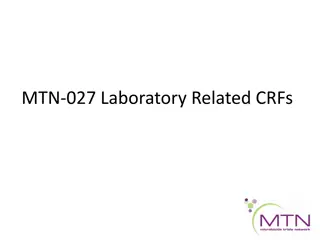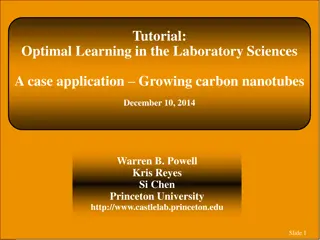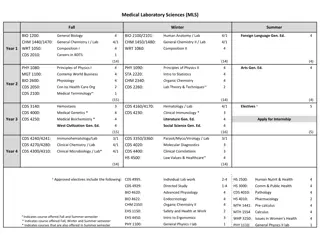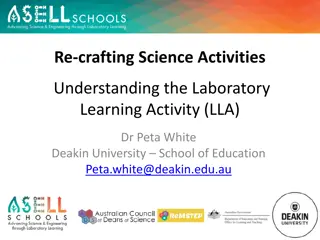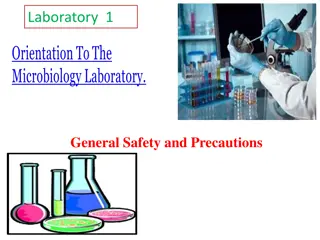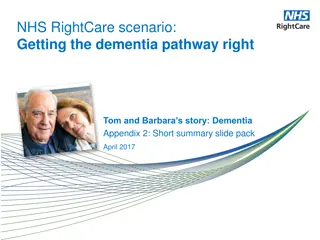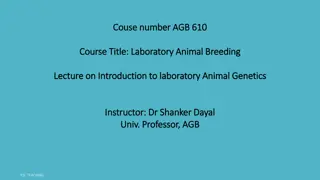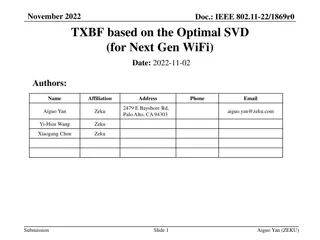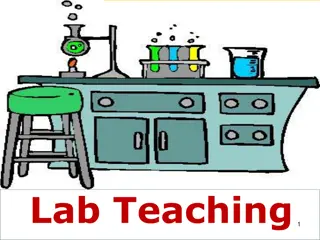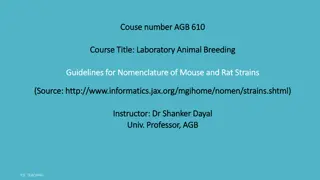Optimal Learning in the Laboratory Sciences
Delve into the concept of optimal learning in laboratory sciences with a focus on richer belief models, correlated beliefs, and parametric belief models. Explore how testing materials can teach us about others, and understand the importance of quantifying behavior and uncertainties in experimental parameters.
Download Presentation

Please find below an Image/Link to download the presentation.
The content on the website is provided AS IS for your information and personal use only. It may not be sold, licensed, or shared on other websites without obtaining consent from the author.If you encounter any issues during the download, it is possible that the publisher has removed the file from their server.
You are allowed to download the files provided on this website for personal or commercial use, subject to the condition that they are used lawfully. All files are the property of their respective owners.
The content on the website is provided AS IS for your information and personal use only. It may not be sold, licensed, or shared on other websites without obtaining consent from the author.
E N D
Presentation Transcript
Tutorial: Optimal Learning in the Laboratory Sciences Richer belief models December 10, 2014 Warren B. Powell Kris Reyes Si Chen Princeton University http://www.castlelab.princeton.edu Slide 1 Slide 1
Lecture outline Richer belief models Correlated beliefs A parametric belief model 2
Correlated Beliefs We start with a belief about each material 5 1 2 3 4 4
A Richer Belief Model Correlations Simple belief model assumes independence Catalysts may share properties of materials Scientists using domain knowledge can estimate correlations in experiments between similar catalysts. 4
Correlated Beliefs Testing one material teaches us about other materials 5 1 2 3 4 4
Correlated Beliefs Testing one material teaches us about other materials 5 1 2 3 4 4
Correlated Beliefs Testing one material teaches us about other materials 5 1 2 3 4 4
Correlated Beliefs Nanotube lengths also depend on growth temperature Continuous parameters: temperature Correlation introduced by continuity If the length is higher than we expected at one temperature, it is likely to be higher at slightly higher and lower temperatures. Puretzky et al. Appl. Phys. A 81 (2005) 8
Parametric Belief Model It is hard to quantify the behavior and uncertainty of length over both temperature and catalyst An easier way: The system can be described by a kinetic model Characterize the relation between temperature, catalyst and length by a few kinetic parameters (but these are unknown) Need to build belief model for kinetic parameters 9
Priors Revised Different types of priors Simple belief model (lookup table) Lookup table with correlated belief model Parametric belief model Discrete prior with probabilities 10
Priors Notes: The more you know, the more efficient your experiments will be. It is especially important to characterize what you do not know. The best experiments are those that address the areas you are most uncertain about. but at the same time we want experiments that do the most to achieve your goals. These ideas are very intuitive when using lookup table beliefs (e.g. testing the value of a catalyst teaches us about the value of the catalyst). Things get trickier when we depend on nonlinear models with uncertain parameters. 11
Kinetic Model Concentration gradient driven Compositional Ripening Langmuir adsorption model Thermally activated coalescence Coalescence with external phase Adsorption Becker-Doering aggregation Flocculation Coalescence Droplet-droplet coalescence
Tunable and Kinetic Parameters Controllable parameters Droplet diameters External volume Volume fractions Unknown kinetic parameters Ripening Coalescence Flocculation Adsorption Temperature independent rate prefactor Activation energy barrier Adsorption/desorptio n energy barrier difference 13
Tunable and Kinetic Parameters Tunable parameters Unknown parameters
Kinetic System NNormal and NExcited are percent released under respective conditions. ( ; , , ) N x T Tunable parameters: Droplet diameters Volume fractions Surfactant concentrations Unknown kinetic parameters Rate prefactors Energy barriers Time scale: Small for excited state Large for normal state Temperature: Large for excited state Small for normal state
Trade-off in stability We would like emulsion to be stable under normal conditions (room temperature) over a long time scale. However, we need the emulsion to destabilize under excited conditions (high temperature) over a short time scale. Define utility to optimize: U =aNExcited-(1-a)NNormal
Optimal droplet diameters Inner water droplet diameter (nm) 1 Utility 0.9 0.8 Use knowledge gradient to determine where maximum utility occurs. 0.7 0.6 0.5 0.4 0.3 5 6 7 8 9 10 Oil droplet diameter (nm)
